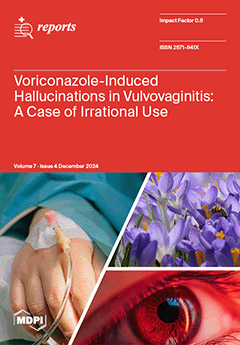Background: The systemic stress response to surgery is a complex physiological process characterized by neuroendocrine, sympathetic, and inflammatory activation. While necessary for survival, this response can lead to adverse outcomes such as hyperglycemia, immune suppression, cardiovascular complications, and delayed recovery. Regional anesthesia (RA)
[...] Read more.
Background: The systemic stress response to surgery is a complex physiological process characterized by neuroendocrine, sympathetic, and inflammatory activation. While necessary for survival, this response can lead to adverse outcomes such as hyperglycemia, immune suppression, cardiovascular complications, and delayed recovery. Regional anesthesia (RA) has been shown to modulate this stress response more effectively than general anesthesia (GA) by blocking nociceptive signaling and attenuating the release of stress mediators.
Objectives: This review aims to elucidate how RA influences the systemic stress response, highlighting its clinical benefits in reducing postoperative pain, improving hemodynamic stability, minimizing inflammatory responses, and preserving immune function. Additionally, this review examines evidence from clinical trials supporting using RA to improve surgical outcomes, particularly in high-risk populations.
Methods: A comprehensive narrative review of the literature was conducted to explore the physiological impact of RA on the systemic stress response and its associated clinical outcomes. Studies comparing RA to GA across various surgical procedures were evaluated, focusing on neuroendocrine modulation, sympathetic inhibition, inflammatory attenuation, and the implications for pain management, cardiovascular and pulmonary function, and immune preservation.
Results: RA significantly attenuates the neuroendocrine response by reducing the release of cortisol and catecholamines, thereby improving hemodynamic stability and reducing myocardial oxygen consumption. RA also inhibits the sympathetic nervous system, leading to improved cardiovascular outcomes. Furthermore, RA mitigates the inflammatory response by reducing pro-inflammatory cytokine levels, reducing the risk of systemic inflammatory response syndrome (SIRS), sepsis, and pulmonary complications. Clinical studies and meta-analyses consistently demonstrate that RA reduces postoperative pain, opioid consumption, and the incidence of cardiovascular and pulmonary complications, particularly in elderly and high-risk patients.
Conclusions: RA offers a significant advantage in modulating the systemic stress response to surgery, improving postoperative outcomes by reducing pain, enhancing cardiovascular stability, and preserving immune function. Its benefits are particularly pronounced in high-risk populations such as the elderly or those with pre-existing comorbidities. Given the growing evidence supporting its efficacy, RA should be considered a critical component of multimodal perioperative care strategies aimed at minimizing the systemic stress response and improving recovery. Future research should optimize RA techniques and identify patient-specific factors to enhance therapeutic benefits.
Full article




